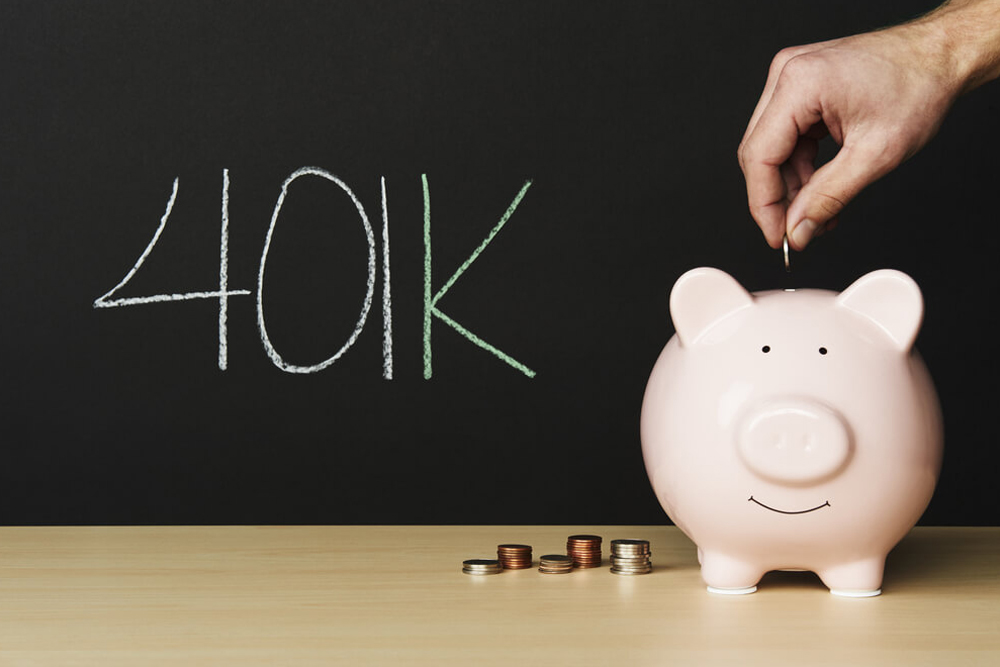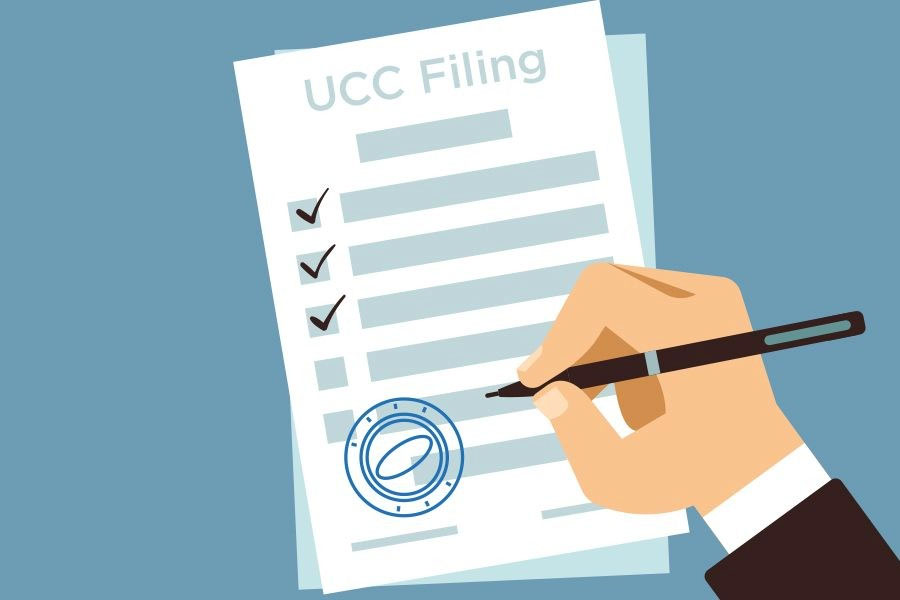No matter your age, you possibly have a lot of concerns and questions about saving for retirement. How to save for it? What options are accessible, and- most importantly- how much money should you be socking away? One of the top and most tax-friendly ways to start saving for retirement is by contributing to an employer-subsidized 401(k) retirement savings account. Many organizations offer them, and for many staff, this is their individual retirement savings account. But with so many options, stipulations, unfamiliar terms, and rules, 401(k)s can be mystifying even to financial-savvy savers.
What is a 401(k)?
A 401(k) is a retirement program offered by some employers. These programs allow you to contribute directly from your paycheck, so they are easy and impactful ways to save and invest for retirement.
Two main kinds of 401 (k)s:
- A Roth 401 (k): About half of the employers who provide a 401 (k) give this variation. Your benefactions are made after taxes, but distributions in retirement are not taxed as income. That indicates your investment earnings develop federally tax-free.
- A traditional 401(k): It is the most common kind of 401(k) account. Your contributions are made pre-tax. The contributions and your investment earnings grow tax-deferred. You will be taxed on distributions in retirement.
Why should I use a 401(k) plan?
For one, you can use 401(k) for matching dollars. Over ninety percent of employers that provide a 401(k) plan also kick in a matching contribution, which indicates as you contribute, your employer will, too. Typically, that match will be worth fifty percent and a hundred percent of your contributions, up to a limit that usually falls between three percent and six percent of your annual income. In case your employer offers up this free money, you need to do everything you can do to contribute enough to take advantage of it. The other great benefit of 401(k) is that it enables you to save a lot of money for retirement in a tax-privileged way. The yearly contribution limit is $19,000 for the tax year 2019, with an additional $6,000 allowed as a catch-up contribution annually for participants age fifty or older.
What type of investments are in a 401(k)?
Frequently 401(k) offers a small, curated selection of mutual funds. That is a good thing and a bad thing. On the good side, you may have access to lower-cost versions of these particular funds, particularly at very big companies that qualify for decreased pricing. The negative side is that even with discounted costs, that small selection reduces your investment options, and some of the funds provided might still have higher expense ratios than what you would pay in case you could shop among a longer list of alternatives. That can make it challenging to build a low-cost, diversified portfolio. Some programs also charge administrative fees on top of fund expenses, which can add up. In case 401(k) is costly, contribute enough to take home your matching dollars, and then direct any supplementary retirement savings contributions for the year into an IRA.
How much can you contribute to your 401(k)?
401(k) plan contribution limits
First things first: The most you can contribute in 2020 to a 401(k) plan is $19,500 (up from $19,000 last year); that limit raises to $26,000 (up from $25,000 in 2019) in case you are 50 or older. Employer contributions are higher than that limit. These limits are laid down by the IRS and subject to change each year. There is a catch-up contribution for employees aged fifty and over who participate in any of these plans. It enables an additional $6,500 contribution in 2020 and $6,000 in 2019, bringing their total 401(k) benefactions for 2020 to $26,000.
That limit determines how much you can contribute, but it does not tell you how much you should contribute. Contributions to 401(k) are typically due by the end of the calendar year. A traditional 401(k)is an employer-based retirement savings account that you fund via payroll deductions before taxes have been taken out. Those contributions reduce your taxable income and assist cut your tax bill. For instance, in case your monthly income is $4,500, and you contribute $1000 of that to your 401(k) plan, only $3,500 of your paycheck will be exposed to tax. The money will be shielded from taxes as it grows, while it is in your account.
Usually, the money can be invested in a variety of stock funds and bond funds. The average 401(k) program offers nineteen funds, and typically nearly half of plan assets are invested in the United States stock finances and target-date funds, the latter of which can transform their asset issuance to become more conservative over time. Most employers also match employees’ contributions up to a particular percentage of salary. Some companies even contribute to employees’ accounts regardless of whether the workers contribute their own money. On average, organizations contributed 5.1% of an employee’s pay to the employee’s 401(k) account following the Plan Sponsor Council of the United States of America.
How much should you put aside for retirement in a 401(k) plan?
In case you contributed $19,000 to a 401(k) yearly for thirty-five years and got a six percent average annual return, you would have over $2.3 million. And if your employer-matched contributions, that would add to the tally. However, $19, 500 a year is a lot of money-, particularly as an ongoing, year-after-year commitment. It might or might not be enough to fund your retirement, or it could be even more than you need. Your 401(k) contribution amount should be directed by your retirement, saving goals, lifestyle, existing resources, and family decisions.
How much money you will need in retirement depends on when you plan to retire, how much of your current income you would like to replace, and how much you want to depend on Social Security. According to Stuart Ritter, a certified financial planner with T.Rowe Price, employees should save at least 15 percent of their income for earnings, inclusive of any employer match. In case your employer contributes three percent, for example, then you would need to save an extra twelve percent. Ritter recommends for people who are not at their fifteen percent, to get there to increase the amount they are saving by 2% yearly until they reach the 15% level. He commends if someone is saving 3% today, raising it to 5% in the next year and 7% the year after and so on.
The tax-deferred gain of a 401(k) can assist in building sizable retirement savings. For instance, a twenty-five-year-old who contributes $5,500 yearly to a 401(k) and has an annual return of 6% will accrue a savings of $902,262 at age 65. In case he or she is in the 22% tax bracket and saves the same amount in a taxable account, assuming the same gain, the balance would amount to $643,500 after 40 years.
Typically, you must be at least fifty-nine and half years to withdraw money from your 401(k) without owing a 10% penalty. The early-withdrawal penalty does not apply, though, if you are age 55 or older in the year you leave your employer. Your withdrawal will be subjected to ordinary income tax. And after you reach age seventy and a half, you will be obligated to take required minimum distributions. But if you are still working when you reach that age, and you do not own 5% or more of the company you are working for, you do not have to take a Required Minimum Distribution (RMD) from the 401(k) that you have via that job.
Roth 401(k) vs. traditional 401(k)s
Which account is best for you, traditional 401(k)s or Roth 401(k)?
By Melissa Brennan, an accredited financial planner in Dallas, a 401(k) works best for someone who presumes to be in a lower income tax bracket at retirement than they are at present. For instance, someone in the 32% or 36% tax bracket can retire in the 24% bracket. Brennan reports that in that case, it would make sense to save on a pre-tax basis and defer income taxes until retirement.
Employers have been accelerating tax diversification in their retirement plans by including Roth 401(k)s. These accounts combine features of 401(k)s and Roth IRAS. Contributions go into Roth 401(k) after you have paid taxes on the money. You can withdraw contributions and earn tax-and penalty-free if you are at least age fifty-nine and a half and have been in possession of the account for five years or more.
You will also be needed to take minimum distributions from a Roth 401(k) after you turn age seventy and a half. Nonetheless, you may be able to avoid RMDs if you can transfer the funds from a Roth 401(k) plan into a Roth IRA, which is not subject to required minimum distributions. It is worth noting that in case you invest in both a Roth 401(k) and 401(k), the total amount you can contribute to both accounts can not go over the annual limitation for your age, either $19,500 or $26,000 for 2020). In case you exceed it, the IRS may hit with a 6% excessive- contribution penalty.
Best tips for 401(k) saving and investing
How can I improve my 401(k) retirement savings?
A 401(k) makes saving for retirement easy since the money is taken out of your paycheck. However, your investment choices can be limited, and some plans come with high fees. For a better route to prepare for retirement, follow these tips:
Get your free money
In case your employer matches any portion of the money you contribute to a 401(k), direct your first savings dollars into that account, at least until you attain the full match. It is free money, after all. So make sure in case your plan has a match and contribute at least enough to get all of it. You can always scale back or ramp up your contribution later. In case your plan does not provide matching contributions, begin with the next tip.
Contribute to an IRA
Individual retirement accounts are built for building retirement savings, offering tax advantages and growth potential unmatched by regular savings accounts together with a greater choice of investments than many 401(k)s have. The two main kinds are traditional and Roth, and you can contribute up to $6,000 to an IRA every year (or $7,000 in case you are fifty or older.
Increase your contribution if you start saving later in life
If you begin saving later in life, mainly when you are in your 50s, you might need to raise your contribution amount to make up for the lost time. Fortunately, late savers are generally in their peak earning years. And, from age 50, they have greater opportunities. According to Rowan Financial, in Bethlehem, as far as an ideal contribution is concerned, that depends on many variables. He suggests that if you start saving in your 20s, then 10% is typically sufficient to fund a decent retirement. Nonetheless, if you are in your 50s and just getting started, you will likely need to save more than that.
The more you save, the better
There are various variables to consider when thinking about that ideal amount for retirement. Like: Is your spouse employed? How much can you anticipate from Social Security benefits? Retirement age calls for a specific amount of comfort; however, that also is different for every individual. And then there are the unknowns.
However, regardless of age, most financial planning studies suggest that the ideal contribution percentage to save for retirement is between fifteen percent and twenty percent of gross income. These benefactions could be made into a 401(k) program, 401(k) match received from an employer, IRA, Roth IRA, and or taxable accounts. As your income grows, it is significant to keep on saving 15% to 20% of it so that you can invest the money and grow your investments till you need to begin taking distributions in retirement.
Consider 401(k) a locked account
After you contribute to a 401(k), you should consider that money locked up to retirement. Typically, distributions before age fifty-nine and a half will attract a 10% penalty and income taxes.
What happens if I leave a job?
In case you leave a job, you can roll your 401(k) into an IRA at an online brokerage or Robo-advisor. This will offer you more control over your account and enable you to access a more significant investment selection.














